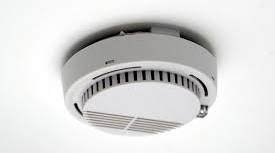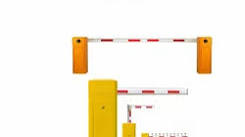Smoke Detector Fire Alarm System: Ensuring Prompt Detection and Response to Fires
Fires can be devastating, causing property damage, injuries, and even loss of life. That’s why it’s crucial to have reliable fire detection systems in place to alert occupants and authorities promptly. One such essential component of fire safety is the smoke detector fire alarm system.
A smoke detector fire alarm system is designed to detect the presence of smoke in the air, indicating a potential fire hazard. These systems consist of interconnected smoke detectors strategically placed throughout a building or premises. When smoke is detected by any of the sensors, the alarm is triggered, alerting occupants to evacuate the area immediately.
There are different types of smoke detectors used in fire alarm systems, including ionization smoke detectors and photoelectric smoke detectors. Ionization detectors are sensitive to small particles produced by fast-burning fires, while photoelectric detectors are more effective at detecting smoldering fires that produce larger smoke particles.
Modern smoke detector fire alarm systems often come equipped with advanced features such as heat detection capabilities, carbon monoxide detection, and wireless connectivity for remote monitoring and control. Some systems also integrate with building automation systems for enhanced safety and efficiency.
Regular maintenance and testing of smoke detector fire alarm systems are essential to ensure their proper functioning when needed. It’s recommended to test the alarms periodically, replace batteries as needed, and conduct professional inspections to identify any issues or malfunctions.
In conclusion, a smoke detector fire alarm system plays a crucial role in early fire detection and notification, giving occupants valuable time to evacuate safely and minimizing potential damage. Investing in a reliable and well-maintained fire alarm system can make a significant difference in protecting lives and property in the event of a fire emergency.
7 Essential Tips for Ensuring Your Smoke Detector Fire Alarm System Keeps You Safe
- Install smoke detectors on every level of your home.
- Place smoke detectors in or near bedrooms and sleeping areas.
- Test your smoke detectors monthly to ensure they are working properly.
- Replace batteries in your smoke detectors at least once a year.
- Interconnect smoke detectors so that when one sounds, they all sound.
- Create and practice a fire escape plan with your family regularly.
- In case of a fire alarm, evacuate the building immediately and call emergency services.
Install smoke detectors on every level of your home.
To enhance the effectiveness of your fire safety measures, it is advisable to install smoke detectors on every level of your home. By strategically placing smoke detectors throughout different levels of the house, you can ensure prompt detection of smoke or fire hazards regardless of where they occur. This proactive approach not only increases the chances of early warning and evacuation but also provides comprehensive coverage to safeguard your home and loved ones against potential fire incidents. Remember, having smoke detectors on every level is a simple yet crucial step towards bolstering your home’s overall fire safety preparedness.
Place smoke detectors in or near bedrooms and sleeping areas.
When installing smoke detectors as part of a fire alarm system, it is crucial to place them in or near bedrooms and sleeping areas. This strategic placement ensures that in the event of a fire breaking out while occupants are asleep, the smoke detectors can quickly detect any smoke or fire hazards and sound the alarm, giving residents valuable time to evacuate safely. By having smoke detectors in close proximity to bedrooms, the chances of early detection and timely response to a fire emergency are significantly increased, enhancing overall safety and protection for occupants.
Test your smoke detectors monthly to ensure they are working properly.
It is important to test your smoke detectors monthly to ensure they are working properly. Regular testing helps ensure that the smoke detector fire alarm system is operational and capable of detecting smoke in case of a fire emergency. By conducting monthly tests, you can verify that the alarms sound as intended and that the batteries are functioning correctly. This simple yet crucial maintenance task can provide peace of mind knowing that your smoke detectors are ready to alert you promptly in the event of a potential fire hazard.
Replace batteries in your smoke detectors at least once a year.
It is important to replace the batteries in your smoke detectors at least once a year to ensure that they are always in working condition. By regularly changing the batteries, you can guarantee that your smoke detector fire alarm system will be ready to alert you promptly in the event of a fire emergency. Taking this simple step can potentially save lives and prevent property damage by ensuring that your smoke detectors are powered and operational at all times.
Interconnect smoke detectors so that when one sounds, they all sound.
Interconnecting smoke detectors in a fire alarm system is a crucial safety measure that ensures prompt and effective notification in case of a fire emergency. By linking all smoke detectors within a building or premises, the interconnected system ensures that when one detector detects smoke and triggers the alarm, all other detectors also sound simultaneously. This feature is invaluable as it provides early warning to all occupants throughout the property, allowing them to quickly respond, evacuate, and take necessary safety precautions. The interconnected smoke detector system enhances overall fire safety by maximizing the chances of timely detection and response, ultimately saving lives and minimizing property damage in the event of a fire.
Create and practice a fire escape plan with your family regularly.
Creating and practicing a fire escape plan with your family regularly is a crucial tip for ensuring everyone’s safety in the event of a fire emergency. By developing a detailed escape plan that includes designated escape routes, meeting points outside the building, and assigning responsibilities to each family member, you can effectively respond to a fire alarm and evacuate quickly and efficiently. Regularly practicing the fire escape plan helps reinforce the steps to take in case of a fire and ensures that everyone knows what to do without hesitation. Remember, preparedness is key to staying safe during a fire incident.
In case of a fire alarm, evacuate the building immediately and call emergency services.
In the event of a fire alarm activation, it is crucial to prioritize safety and evacuate the building immediately. Every second counts in a fire emergency, so prompt action is essential to ensure the well-being of all occupants. Remember to follow established evacuation procedures and exit the premises calmly but swiftly. Once outside, call emergency services without delay to report the situation and provide necessary details for a quick response. Your quick thinking and adherence to safety protocols can make a significant difference in preventing injuries and minimizing property damage during a fire incident.




